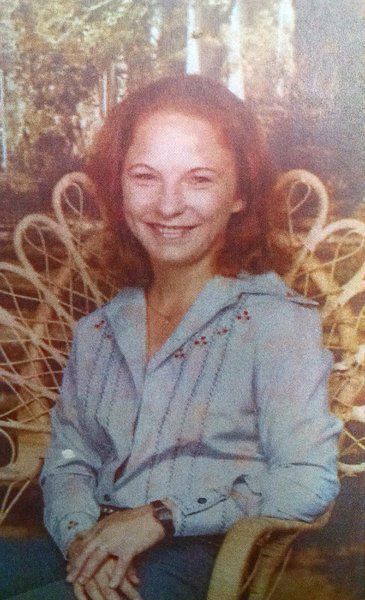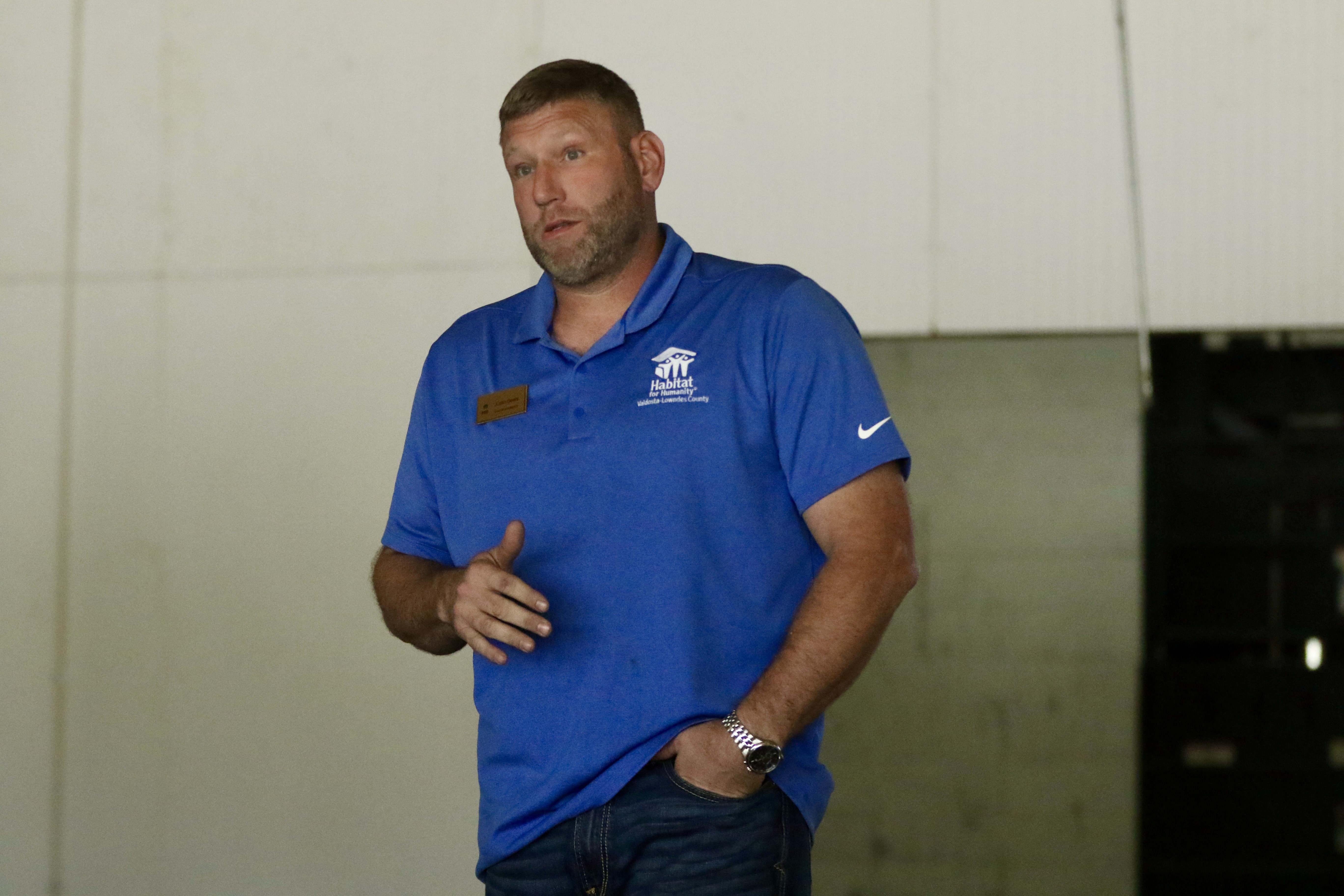SunLight Project: Cold cases — A look at the unsolved mysteries
Published 6:00 pm Saturday, June 10, 2017

- File photoGlenda Quisenberry, from Thomas County, disappeared in 1989 and has not been seen since.
VALDOSTA — Eleven years and four months.
That’s how long it took investigators to find enough evidence to arrest and charge someone in the infamous disappearance of Tara Grinstead, an Ocilla teacher who vanished from her home in October 2005 at the age of 30.
During that time, the Georgia Bureau of Investigation followed hundreds of leads but to no avail.
Billboards plastered with her face and a hefty reward popped up across the state. Her disappearance catapulted Ocilla, a tiny town of just a few thousand, into the national spotlight.
As the years passed, her case became the largest file in GBI history, and the public became more and more intrigued the longer the disappearance remained unsolved.
In February, a fresh tip led GBI agents to Ryan Alexander Duke, a 31-year-old who attended Irwin County High when Grinstead taught there.
Duke was arrested and charged with the murder of Grinstead. A week later, his longtime friend, Bo Dukes, was arrested and charged with helping hide the body.
That fresh tip — that one tiny piece of new information — is often all it takes to break open a case as cold as ice, investigators say.
Grinstead’s family and friends, along with a captivated public, are one step closer to knowing what exactly happened to her all of those years ago.
But her death isn’t the only unsolved mystery scarring the region.
Across the SunLight Project coverage area — Valdosta, Dalton, Thomasville, Milledgeville, Tifton and Moultrie, Ga., and Live Oak, Jasper and Mayo, Fla., along with the surrounding counties — murders and disappearances stretching back decades stand unresolved.
An 87-year-old World War II veteran murdered along with his wife at their home on Putnam County’s Lake Oconee.
A Thomas County woman last seen with her estranged boyfriend and whose disappearance wasn’t reported for months.
A Valdosta insurance man found dead in a field, brutally killed with a machete.
They and many others were stripped of their lives, and the culprits remain free and unknown, leaving a burning desire inside family and law enforcement alike to search out the truth and bring justice to those lost.
They are the cold cases of South Georgia and North Florida. Here are their stories.
A 45-year-old whodunit
John Henry Vick, 34, was found dead on the morning of Sept. 24, 1972, a Sunday. His date for the previous evening, Annie Carol Whitley Wilson, 31, was missing.
Vick’s body was found in a pool of drying blood near what today is the entrance to the Thomasville-Thomas County Landfill. The vehicle Vick had been driving was parked a short distance away.
His clothing had been rifled through. Nothing was left in his pockets. Tracks of another vehicle were nearby. So were footprints of a barefoot person.
Vick’s skull had been cracked in several places. The blows were believed to have been inflicted by a heavy metal pipe or ax.
His date’s body was found three days later beside a church on Nine Mile Post Road, a dozen miles from where Vick’s body was found. Wilson also had been beaten to death, and suffered blows to the head.
The murderer — or murderers — have not been apprehended. The motive is unknown.
“I think my suspects are dead,” said Lt. Tim Watkins, Thomas County Sheriff’s Office chief investigator.
Thomas County Sheriff Carlton Powell, then chief deputy and a lead investigator in the case, said Vick and Wilson were last seen on Saturday night, Sept. 23, 1972, at a U.S. 84 East truck stop.
Returning to the site where Vick’s body was found, Powell recalled the car — which had been backed in — was parked near the body. Vick was lying lifeless on the ground near the rear of the vehicle, a station wagon belonging to his father.
The case became active again in 2014, when a letter about the case was mailed to the clerk of court’s office. Then-Clerk of Court David Hutchings gave the letter to Thomasville assistant district attorneys, who passed it along to the sheriff.
Information in the letter could not be verified, Watkins said, adding he thinks the writer was suffering from Alzheimer’s. Another dead end.
The 1972 investigation revolved around Vick being the intended victim and it didn’t look at Wilson’s background and activities.
“They thought he had been murdered because of a child custody dispute. That’s the way it was handled,” Watkins said.
But now Watkins wonders if the murder had less to do with Vick and more with Wilson.
“Someone might have been mad at her,” he said.
Nothing is known about the Wilson family’s whereabouts.
Watkins still searches for new leads. He wants to talk to a boy who was at the truck stop where the murder victims were last seen but whose current whereabouts are unknown.
The boy, then 14, is Danny Williams. He was never interviewed, but Watkins thinks he could be a valuable witness. Watkins, who can be reached at (229) 225-3315, also would like to talk to Wilson family members, who were also never interviewed.
In the initial investigation, evidence was gathered from Thomas County and surrounding areas, including a blood-covered tire tool. Now the evidence cannot be found, Watkins said.
Until new information is brought to light, the case remains a mystery.
– Patti Dozier, Thomasville Times-Enterprise
A mother’s flickering hope
For the first year after the death, Geraldine Smith held a candle on the 27th of each month in memory of her son, who was shot and killed seven years ago.
As she relentlessly held vigils throughout the frigid winter, her son’s case grew colder.
“Whoever killed him, when they killed him, they killed my whole family,” Smith said in a previous Suwannee Democrat article.
Marvin O’Hara was shot on March 26, 2010, in a rooming house at 813 Hillman Ave. in Live Oak. Police found O’Hara with a single gunshot wound at about 11 p.m.
He died the next day at UF Health Shands Hospital at the University of Florida.
Justin Bates, a Live Oak Police Department detective, said clues as to who shot and killed O’Hara are scarce.
“We don’t have a lot to go on,” Bates said then.
That hasn’t changed.
According to Live Oak Police Chief Buddy Williams, despite continued efforts, there is still not much known.
“What’s odd is there is nobody talking about this,” Williams said, adding the police used phone taps earlier in the investigation to try to gather information and even in the past few months have been re-interviewing witnesses, but to no avail.
“Nobody has any new information. We’ve polygraphed, we’ve exhausted all of our resources,” he said.
“Generally in a case like this, somebody is going to say something. That hasn’t been the case in this one. Nobody said anything. That tends to make you think that maybe something else happened. We don’t know.”
What is known is the gun used to kill O’Hara, a 9mm Hi Point semi-automatic pistol, was found later in a local retention pond. Witnesses told police O’Hara’s roommate disposed of the gun. Police then arrested him as a suspect.
He was charged with tampering with evidence, possession of a firearm by a convicted felon and use of a firearm during the commission of a felony.
“On the first night working the case, we were told he was seen walking out with a gun, but we could never verify it,” retired LOPD detective Ron Shaw told a reporter in 2011.
However, Bates said investigators were not able to directly link the roommate to O’Hara’s death. He was later released from jail and sentenced to probation.
For years, Bates continued to scour the O’Hara case files searching for something investigators may have missed. Although police have followed every lead, he said no solid information has been found that could bring the case to a close.
Some information suggests there may not even be a crime to solve.
“We’d received some information that this was possibly a suicide as well,” Williams said. “But that’s kind of hard to prove or disprove. They base that on scientific evidence, location of wound, was there gunshot residue on the hands, all kinds of stuff.
“What could have helped a lot of that would have been the recovery of the weapon. We did recover the weapon but it was in a pond awhile later.”
And the inability to close the case is what bothers Williams and the others in the Live Oak Police Department the most.
“I truly want some closure for the family,” he said. “That’s been the toughest part.
“And it’s not good to have an open case where death is involved out there. I’d love to figure it out, put the pieces together, be it a homicide, be it a suicide, be it anything. It’s just not knowing that’s hard about it.
“It frustrates the investigators that are working it as much as it does anybody else. Because there’s nothing better than bringing closure to something.”
Trying to help the LOPD bring closure to the case has been the Crime Stoppers of Suwannee County. The organization has offered a reward of up to $20,000 for information about O’Hara’s death.
But even the monetary reward hasn’t provided the information necessary to solve the case.
“There’s still a reward out there,” Williams said. “That’s another frustrating part of it. Usually when you offer some dollars, somebody is going to say something.”
Until then, Smith holds a candle. She hopes and she waits.
– Thomas Lynn, The Valdosta Daily Times
A horrific Lake Oconee tragedy
Now a little more than three years old, the case of who brutally murdered an elderly couple at their home in an affluent neighborhood at Putnam County’s Lake Oconee holds as much mystery today as it did then.
Their names were Russell and Shirley Dermond, and their deaths were horrific.
The killers murdered the 87-year-old World War II veteran then cut off his head. They put his corpse in the double-garage of the couple’s lake-front home. Russell’s head has never been found.
Authorities first thought Shirley, 86, had been abducted only to learn later that she also had been viciously murdered but in a different manner than her husband.
Shirley’s body — which had been dumped into Lake Oconee about six miles from where she and her husband lived — surfaced several days later, beside two men fishing in a boat.
She had been killed with a blunt-force object and her body had been tied by rope to cement cinderblocks.
A hammer was possibly the murder weapon. Local, state and federal law-enforcement authorities have never found the weapon.
“There’s a lot of things we know about this case and a lot of things we don’t know about this case,” Putnam County Sheriff Howard Sills told The Union-Recorder during a recent interview.
“The two biggest questions that linger in this case is who killed them and why.”
The May 2014 case made national headlines but no solid leads have turned up.
“We don’t have a motive and we still can’t say for absolute certain that they were killed in their home because of the lack of evidence we found there,” said Sills, who has solved dozens of murder cases during his law-enforcement career.
Sills said he, along with detectives from his department, and Federal Bureau of Investigation agents from the field office in Macon have never been able to pinpoint exactly where the victims were killed.
The veteran sheriff, who also serves as second-president of the Georgia Sheriff’s Association, said the lack of knowing certain things has been frustrating.
“We’re constantly going back over things and looking back into the files of this case, but I don’t think there’s a likelihood of us developing a suspect at this juncture, based on something we already have,” Sills said.
“I think it’s going to require somebody coming forward – somebody making a call.”
Anyone with information about the double-murder of Russell and Shirley Dermond should call the Putnam County Sheriff’s Office at (706) 485-8557.
– Billy Hobbs, The Union-Recorder
A daughter’s nightmare
On Thursday afternoon, Nov. 7, 1985, Delores Cox became worried about her parents — the Rev. DeWitt and Jessie Lou Lewis, both 66 — when they failed to show up for work. She phoned them several times but no one picked up.
Cox, the Lewis’ only child, went to their Dalton home and found them dead, brutally beaten with severe blows to the head and body.
The murder weapon is unknown. At the time, Leon Cox, Delores’ husband, said the only item missing from the home was the fireplace set containing a poker and other tools.
Dewitt’s wallet had $700 in it that was untouched, and rings, furs and a valuable gun collection were still in the home, Leon told the Daily Citizen-News right after the murders.
James Chadwick, who was a captain in charge of the criminal investigation division of the Dalton Police Department and later became the department’s chief, said at the time it looked like someone had rummaged through the home, but it wasn’t at the “ransacked” level.
Leon Cox said then he believed the Lewises knew their attacker.
“We’d come over at night and he’d cut the lights on and look outside before opening the door,” he told the newspaper. “He had a big old lock on the front door and there’s no sign it was forced.”
“(The Lewises) went to church Wednesday night at Brookwood Baptist where Lewis was the pastor,” according to a past newspaper article. “… They had spoken to people on the phone as late as 10 p.m. When the bodies were found, they were dressed as though getting ready for bed.”
Chadwick told reporter Mark Millican in 2014 that detectives “probably talked to over 100 people” while investigating the case.
The case drew a lot of attention, and investigators got all kinds of calls, even from people who said they dreamed about the case.
“… And you have to follow up on every lead you get because you don’t know which one’s going to lead you in the right direction,” he said.
Chadwick said investigators had “a feeling” about who committed the murders.
While investigators have never named a suspect, Chadwick indicated in 2014 detectives did have someone in mind.
“I think in our minds and our hearts we know who did it. The problem with that is … feeling in your heart and knowing in your mind who did it is not beyond a reasonable doubt,” he said.
The Dalton Police Department follows up on cold cases annually, according to spokesman Bruce Frazier. Detectives followed up on some new leads in the case in the past year, but it did not lead to any new developments.
– Charles Oliver, The Daily Citizen
This report is the first installment of a four-part series on unsolved crimes in the region. The other parts will print June 13, 18 and 20.
The SunLight Project team of journalists who contributed to this report includes Thomas Lynn, Patti Dozier, Charles Oliver, Billy Hobbs, Alan Mauldin and Eve Guevara, along with the writer, team leader John Stephen.
To contact the team, email sunlightproject@gaflnews.com.





